
FREE PARENTING BREAKTHROUGH SESSION
I coach parents of toddlers and preschoolers to get clear about parenting and help you build a STRONG FAMILY with CALM, CONFIDENT PARENTS raising HAPPY KIDS who are PREPARED FOR SCHOOL and REAL LIFE.
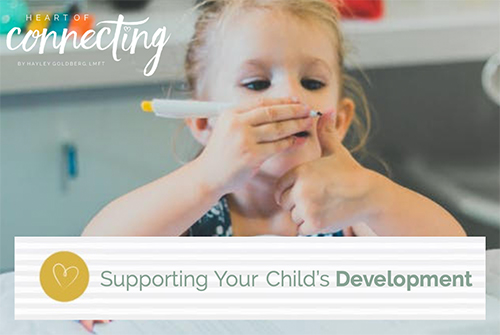
My parenting classes always begin with building new relationships by getting to know each other. Everybody gets to hear about my three imperfectly amazing kids whom I’m so blessed to have in my life and so incredibly proud of. Right off the bat in the first meeting we bust the myth of needing to be the perfect parent.
After we are very clear that this parenting series is not about becoming a perfect parent (it is about being the best parent for your child) the second class immediately focuses on the children and their development so parents can understand their children better and begin to have realistic expectations for them and from them.
I introduce to parents the many different areas of child development that are important to consider as we are raising kids. I use the metaphor of buckets to represent the multiple developmental domains of childhood – academic/cognitive, language and communication, motor skills (gross and fine motor), social-emotional (including self-regulation), creativity, and spirituality. I add in resilience as a developmental domain we also need to be intentional about developing through our parenting.
While it’s helpful to compartmentalize the developmental areas for the sake of conversation and discussion in class or when coaching privately with families, what we can’t separate is development from the family environment and the parenting practices on which healthy child development relies. Of all the environmental influences on development, the family likely has the most profound impact on child development.
To support healthy growth and development for children your home really matters and your parenting counts!
Family stability is the foundation necessary to support healthy development. Children who grow up in stable homes have caregivers who remain constant, consistent, and connected to them. They have parents who are emotionally healthy, engage in appropriate parenting practices (think positive discipline), and provide a nurturing and stimulating home environment.
When we create a positive family climate where parents and children are respectful of one another, a space where parents and children develop warm, supportive relationships and enjoy being together and spending time together, children can learn and children will thrive. That’s because children are more able and motivated to focus, remember, learn, and engage in self-control when they feel happy, relaxed and connected to others.
There are many ways to create a stable and positive family climate. Here are 7 top tips to consider:
First and foremost is the couple relationship. Make it a priority to stay lovingly connected to your spouse. Maintaining a close, safe, and respectful relationship allows you both to work closely together to create that stable, loving, and positive home environment.
Build family relationships. Making time to do things together as a family promotes family cohesion which enhances emotional development in kids.
Spend time with your little ones sharing activities together. Try to enjoy some fun, relaxing moments every day. Focus more on the quality of the experience together than worrying about the amount of time you spend together. When you’re together show your enthusiasm and let your child know you ‘re really enjoying spending time with them. Ten to fifteen minutes of meaningful and connected time each day will go a long way in building relationships and a positive family climate.
Be respectful, approachable, and positive in your interactions. Smile, laugh and be respectful. Model the use of manners and polite language such as “please”, “thank you”, and “you’re welcome”. When talking with children take the time to make eye contact and use a warm, calm voice. Have positive expectations and look for opportunities to comment positively on your child’s efforts, participation, and behavior. Families that treat each other with love and respect provide a positive example of healthy social interactions for young children
Clearly communicate love and warm feelings toward your children. Show your love for your child through both physical and verbal affection. Children never tire of hearing, “I love you.” Physical touch, hugging and kissing are the universal language of loving family connections.
Facilitate positive family interactions. Because family members are role models, children learn from, imitate and adopt the behaviors and patterns of parents and siblings. Encourage your kids to engage in positive interactions with you and with siblings. Teach and model the importance of sharing, helping others, and being kind and respectful to each member of the family.
Engage in social conversation. Talk to kids about their interests, motivations, and point of view. Look for opportunities to encourage conversation and seek out their thoughts and ideas. Allow your children to make decisions for themselves when appropriate. Share stories about your childhood. While you are learning about who your child is, children relish conversations where they can learn about who their parents are too.
Make learning fun
Look for opportunities to make every day learning activities fun. Think about the things that make your child laugh and smile and find creative ways to integrate these things into your everyday family routines and activities. Provide your kids with many opportunities to experience appropriate levels of autonomy and independence (as hard as this is to do sometimes) so they can build confidence in their abilities and in their learning.
Family members are the first people your children will have regular contact with. As relationships and the patterns for interacting develop within your family unit, so will your child’s understanding of himself, other people, and the world around him. The family dynamics you create will, over time, shape the way your children think, reason and problem-solve. So please be intentional about committing to create a loving and nurturing home that provides plenty opportunities for growth and bonding. This is what will truly set your child on an optimal developmental path that has the potential to produce many life -long, positive outcomes.
Changing patterns of behavior is hard, and it can be confusing and challenging to try new things. It’s also easy to give up when something new doesn’t work out and then to come up with plenty of excuses about why it doesn’t work.
I want you to know my support is always available.
If you relate to any of this information and want to learn more about how I can help you, or if you want to schedule a free phone conversation to see if my coaching is right for your family, please email me at This email address is being protected from spambots. You need JavaScript enabled to view it.
Your parenting counts!
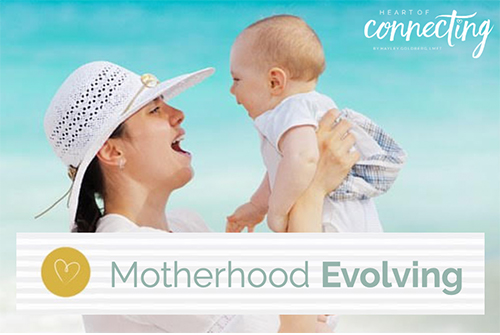
Do you ever look at your life and wonder, what’s happened?
You’ve lost yourself in motherhood and it now feels like the woman you used to be is missing. You’re exhausted, unhappy and frustrated with the change that has become your life.
There’s a common misconception among mothers that being a parent is something we were born to do. We believe that if parenting is something we are meant to do then it should come naturally, be easy, and feel good.
The truth is, parenting isn’t always what we had imagined. It can be exhausting and overwhelming. It comes with struggles and challenges and can be hard in ways we cannot even begin to describe. Not every minute is filled with meaningful activity, and the days are not all roses, sunshine, and unicorns.
Some days (many days) being a parent will leave us feeling frustrated, doubtful, and worn-out. We’ll question what went wrong. Our confidence will be rocked, and our self-esteem shaken. We’ll wonder if we’re cut out for the job.
The reality is, as soon as we have kids, we are forced to evolve. We’re required to grow and mature almost instantly. On difficult days motherhood may put us in an identity crisis as we search to discover meaning and look to understand this evolution - who we were, who we are, and who we are becoming.
It’s important to understand parenting is a process not an event. Becoming a parent means evolving to the next stage of your life. It means having to change and learn new skills as we grow into a new and (hopefully) better version of ourselves.
Some of us will embrace the change and the process will be relatively easy. For many of us though, change is rarely a comfortable, easy or enjoyable process and we can count on there being obstacles along the journey.
Our personal travels will require courage as we face old belief systems we’re plagued with from how we were parented. We’ll need to resist succumbing to other people’s opinions and expectations of us, and we’ll have to look closely at our lives today to reconcile what we show the world and how we really live.
The change to motherhood will require us to do lots of thinking and reflecting and we’ll need to own our doubts and our frustrations. That’s part of the deal.
If the process of change is so darn hard and uncomfortable, what is the benefit of evolving?
Well motherhood has already happened. Like it or not, embrace it or not, there is no turning back!
If we resist the change we create a lot of tension in our lives. You’re going to cry, you’re going to want to hide from your life, and you’re going to spend a lot of time indulging in wishful thinking about all the ways you wish your life was different - including how you wish you had never had kids.
On the other hand, if we decide rather to look forward, lean in and understand the process of parenthood, we can choose to make small changes over time and the benefits of accepting and embracing our new lives are plenty.
Once you begin evolving into a new space and reconciling your past and your present you’re going to feel much more at peace. Walking your new true parenting path is going to feel clearer and easier (note I said easier, not easy!) You’ll feel less restless, more at ease, and more capable in the parenting you do and the mother you will be.
It’s true, the woman you were before becoming a mother no longer exists! However, the benefits of reconciling this change for you, your kids, and your family comes with peace, contentment, and an emotional safety and security for everyone that will last a lifetime.
Changing patterns of behavior is hard, and it can be confusing and challenging to try new things. It’s also easy to give up when something new doesn’t work out and then to come up with plenty of excuses about why it doesn’t work.
I want you to know my support is always available.
If you relate to any of this information and want to learn more about how I can help you, or if you want to schedule a free phone conversation to see if my coaching is right for your family, please email me at This email address is being protected from spambots. You need JavaScript enabled to view it.
Your parenting counts!
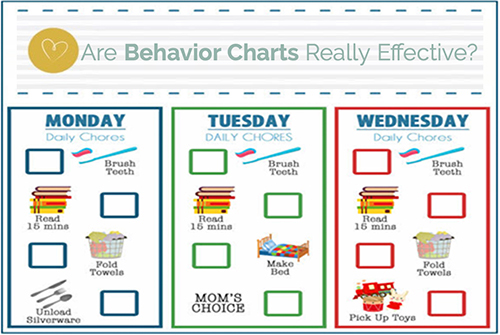
For years sticker charts and prizes have been a popular tool used by parents and teachers to motivate better behavior and reinforce new skills in kids. Many parents and preschool teachers I work with ask me about using behavior charts with their little guys to change behavior. They want to know my thoughts on whether or not they are really effective.
My response to parents and teachers is, “It depends on what you want for your child.”
If the focus is short term on the here-and-now and the end goal is simply wanting compliant behavior from a child - getting them to do what you want, then behavior charts can be effective.
When implemented effectively the charts help dictate the child’s desired behaviors and the rewards and consequences that go along with those behaviors.
If parents are already using behavior charts when we start working together I make sure they understand that it’s the rewards used to motivate behavior are external motivators, meaning they are outside of their child’s own monitoring system. The incentives are driving the behavior, not the child. Children are behaving in a certain way to please their parents (or teacher) and earn the reward.
It’s important parents also know there are limits with behavior charts. When behavior happens because of an external reward the chances of the behavior happening are limited to the presence of the reward. Behaviors will happen only as long as the prizes are available, novel and exciting to the child.
There are also limitations in what can be achieved with external motivators in that the behaviors don’t typically transfer over to other situations. The positive behaviors are limited to the situations in which the rewards are being offered.
On the other hand, if parents want more than just compliant kids (and this is where I coach parents to focus their parenting goals) and to truly and permanently change children’s behavior we need to shift the focus to intrinsic principles of behavior including, self-control, intrinsic motivation (understanding the value and purpose of their behavior) and long-term habits.
When parents shift their focus and emphasis internally and longer term, focusing more on the person they’d like their child to become, then behavior charts become viewed more as a method of bribing children into being compliant and fall short of being effective.
An inner focus requires approaching parenting from the perspective of guiding, coaching and teaching kids rather than controlling children. It means giving up external incentives and not being single mindedly focused on a child’s behavior and the outcomes in this moment. It requires allowing children time and practice to begin to behave in certain ways because they desire the natural positive outcome that comes with their behavior.
When we have an internal focus on behavior certain factors open up for influencing behavior change in healthy ways that we need to consider.
Relationships. Social and emotional development happens within the context of our relationships with children. Dr. Jack Shonkoff, director of the Center on the Developing Child at Harvard University has said, “There is no development without relationships.”
When we teach and guide children in our behavior expectations parents should always consider their relationship with their child and be mindful of being respectful in the interactions with them. Our teachings are stronger and more likely to be internalized by our kids when done positively and respectfully.
Behaviors are learned skills. Behavior is a skill that must be learned, just like learning how to ride a bike or tie your shoe that you learned when you were a child. These skills are best developed and honed over time with guided practice knowing there will be a series of mistakes.
Focus on teaching children guiding principles for their behavior. Help children understand the WHY of their behavior rather than enforcing a litany of rules with corresponding rewards and punishments. When children understand and internalize why they are behaving a certain way that’s when they start to have self-responsibility for their behavior and change is more permanent.
Verbal encouragement is a powerful motivator rather than using external incentives. Pay attention to observable positive aspects of your child’s behavior that are happening and focus encouragement there. Encouragement allows us to reinforce small steps toward larger goals vs focusing praise only on the end product of a behavior goal attached to a reward or a punishment.
When we teach children the skills they need, focused on the guiding principles of their behavior, all within a loving and respectful relationship, children will start to own their behaviors and true, lasting behavior change will come from within – without charts, bribery or manipulation.
Changing patterns of behavior is hard, and it can be confusing and challenging to try new things. It’s also easy to give up when something new doesn’t work out and then to come up with plenty of excuses about why it doesn’t work.
I want you to know my support is always available.
If you relate to any of this information and want to learn more about how I can help you, or if you want to schedule a free phone conversation to see if my coaching is right for your family, please email me at This email address is being protected from spambots. You need JavaScript enabled to view it.
Your parenting counts!
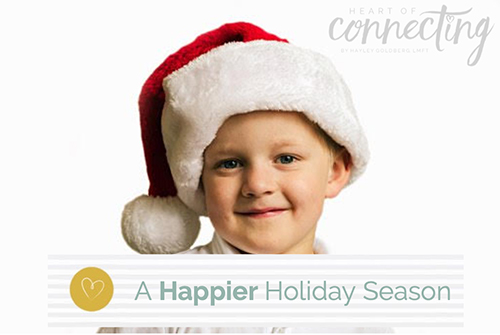
As we get closer to the holidays and winter break is almost here, how do you approach the holiday season?
Do you LOVE the time off work and look forward to this time of year with eager anticipation every year? A time of excitement where your home is filled with family traditions, close connections, fun and happy laughter as your family spends time together.
Or is this the time of year you DREAD the most? You feel pressured and more stressed than normal and your days are full of raised voices, children bickering, no one listening, and emotions running high.
Really what I’m asking, is this is the time of year that brings out the worst in you rather than the best in you?
The truth is for many of us holiday stress is inevitable and comes with the season. Meltdowns, frustration, exhaustion, and feeling overwhelmed are the themes of the season, making us cranky and more emotionally reactive than we like.
I find when parents don’t have a solid plan for navigating through their own rising emotions as well as effective tools for helping with a child’s emotional and behavioral needs, the stress and overwhelm we feel takes over. In these moments we are so much more likely to give in to our annoyance and irritability and react to our children’s misbehavior with punishment.
This punishment leaves our kids feeling awful and us feeling guilty and remorseful long after the heated moment has passed.
So, in the moment when heightened emotions hit, regulating yourself and helping your child regulate their emotions and behavior requires having a solid plan with effective tools.
Here’s your plan - a sequence of five steps to consider as you intervene to support you and your child through the chaos of emotions and behaviors this holiday season.
First: Pause. Acknowledge the moment. Acknowledge your stress and how you are feeling in this moment, and then acknowledge the thoughts you are thinking about your child and their behavior in this moment.
Second: Breathe. Take a few deep breaths and take a moment to take control of your thinking and your feelings. Reframe how you think about the tantrums and the behavior.
Third: Decide. In this sacred moment of your pausing and breathing you get to make a conscious decision with purpose and the intention of how you want to manage your parenting. You get to decide between connection (relating, coaching, guiding and teaching your kids) and punishment (yelling, threatening, shaming, forcing or blaming your kids).
Fourth: Regulate and Relate. Help your child regulate and calm their fight, flight or freeze responses. Your choosing to be calm and to foster connection is the first step in helping your child feel safe and loved so they can regulate and calm their emotional brain that is driving their explosive behaviors.
Forget time-out and let go of the urge to yell, threaten, blame, or shame your kids - all the options our brains (or habit) leads us to want to do when we are feeling defeated, dejected, and depreciated. Instead, spend time-in with your child. Connect with your child from a place of attunement and sensitivity. Sit with them, breathe with them, and calmly be there with them and for them. This will go a long way in helping your child feel self-assured and know you will be there with them as they walk through these hard times.
Lastly: Reason. Heading straight for the reasoning part of your child’s brain with an expectation of them calming down, cooperating, and learning will not work when your child is dysregulated and feeling disconnected from you. When you and your child are feeling calmer and your relationship feels connected only then is it time-to-talk. This is when we can support children in reflecting on their behavior, articulating what they were feeling, and problem-solving ways to do things differently. Now is when we can talk about the next time they get upset, or things don’t go their way, or the answer is NO. Here we can teach our kids more emotionally healthy responses they can choose in the future that don’t leave everyone feeling disrespected and depleted.
Changing patterns of behavior is hard, and it can be confusing and challenging to try new things. It’s also easy to give up when something new doesn’t work out and then to come up with plenty of excuses about why it doesn’t work.
I want you to know my support is always available.
If you relate to any of this information and want to learn more about how I can help you, or if you want to schedule a free phone conversation to see if my coaching is right for your family, please email me at This email address is being protected from spambots. You need JavaScript enabled to view it.
Your parenting counts!
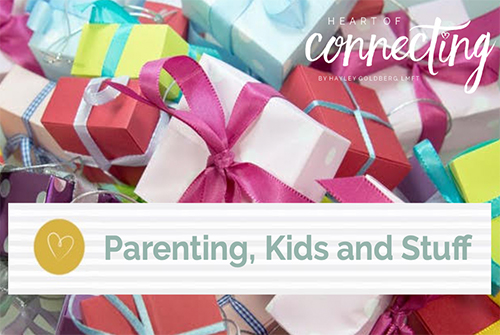
It’s Christmas morning! Mom and Dad were up until 3am putting together Max’s new bike they bought him along with several other presents. They stumble into the kitchen weary eyed to get coffee, and all the while, little Max is bouncing around with excitement as he knows most of the presents under the tree are for him...and he is ready to get started!
As mom and dad shuffle into the living room, Max’s getting ready to tear into his first present, but mom wants to read a Christmas story first and remind Max about the meaning of Christmas and why they are celebrating. She wants to savor the moment and memory of this Christmas as he is growing up so fast. Max is impatient and isn't very happy about this, however, he puts down the present and listens to mom.
Once the story is done, Max passionately grabs the first present and rips it open. He squeals with delight and has a moment of happiness. Then he grabs another present and repeats this process until all his presents under the tree are opened.
And then it happens… Max scrunches his face, starts crying and yells… I never got new batman pajamas! Max is genuinely upset and not easily pacified.
Mom and dad’s hearts just sink. After all their hard work, money spent, wrapping presents and losing sleep...Max wants more! The joy and excitement of his GRAND PRIZED NEW BICYCLE has been deflated.
When did Max become so entitled?
Does this sound familiar?
We are a nation of consumers.
The holiday shopping season is upon us and the advertising is all around us. We are bombarded daily by consumer messages persuading us the goal of life is to have more money and buy more things. And it’s not just during the holidays!
Society and the media give the message that buying more stuff will make us happier and our lives better and so we’ve become a culture that values acquiring stuff.
Many have quietly come to believe that if you don’t own or buy a lot of stuff, you don’t have value. In general, having things has become more important than developing our unique gifts to contribute more meaningfully to the world.
This makes parenting a challenge as we are raising kids in a culture of entitlement and materialistic beliefs.
We need to counteract the damaging message to our children that happiness can be bought.
The reality is we have too much stuff and we are using too much stuff.
We have more stuff than any generation before us. Yet studies show our happiness is actually declining.
This is because we are doing way less of the things in life that bring real happiness.
Today, more than ever before, families have less time for leisure and the limited free time we do have is increasingly spent watching TV, engaged with technology, and shopping.
Enjoying quality time with family and friends, doing things we are good at and enjoy doing is where we ultimately will find true happiness - and it’s not happening often enough.
So how do we make the parenting shift, change perspective and start new traditions?
First step is reflecting on our lives and what we value. We need to get clear what messages we want to ‘gift’ to our children. Ultimately, what we model and what we tell our children needs to matter more to them than what they see in the media or hear from their friends.
Then we need to help our kids discover the emotional rewards that will be gained from things other than shopping and acquisitions. We must help our children rewire their brains for a different kind of internal reward and happiness.
To do this we need to change the way we look at things in our lives and have the courage to change the way your family lives. Bringing more connection, contribution, and skill mastery into our lives and teaching our children these great values that are proven to bring true and lasting happiness.
A connection is a fundamental means for human nurturing. Webster defines it as: a relation of personal intimacy. Children want to be seen, heard, accepted and appreciated. Sadly, when children want connection and validation, we tend to give them stuff instead.
Don’t feed your child’s emotional hunger with possessions. Give children what they truly want which is your undivided time and attention. Look for ways you can set up rituals in your daily and weekly routines that allow you to spend more time connecting. Focus on the quality of the time spent together rather than the quantity of time.
Consider buying gifts that encourage connection and family bonding – tickets to Disney on Ice, a family show, the local zoo, a children’s museum, a game for the family to play, a book to read together.
“Children thrive when you give them half as many presents and twice as much of your presence.”
Give your children the opportunity to discover how good it feels to give back. Giving back is personally empowering and is known to boost self-esteem, improve health, and fight depression.
Let your kids experience the difference they can make in someone else’s life. Give back as a family, not just this time of year but all year long.
There are many ways to give back locally in your community. Seek opportunities which reflect your family or children’s personal passions – the animal shelter, animal rescues, contributing through sports, helping the elderly, the homeless, or someone who is sick. Even helping at an edible garden, harvesting fruits and vegetables, bring meaningful contributions.
Become a team. As a family, raise money for a cause important to you, and do a Bubble Run or Mud Run together. Make contributing fun and meaningful. Let it become a family tradition, and you will be giving your children a gift that will be enjoyed and remembered longer than anything you buy.
Working on skill mastery for something your child has a talent or passion for. Working hard, persevering, and eventually succeeding helps wire the brain for a different kind of happiness.
Researchers have shown that family environments where parents focus on providing gratifying and fulfilling activities for kids, without relying on commercial stuff, better allow children to develop their personal strengths.
Also, children who are regularly engaged in fulfilling activities are more likely to become adults who are happier, less stressed, with more joyful and meaningful lives. Help your kids master cooking, basketball, sewing, or creative arts. Practice and enjoy their hobby with them. This is the kind of happiness reward that is permanent and lasts a lifetime.
Entitlement doesn’t just happen, it’s created. The time is now to let go of old ways that have become all too familiar over the years. Embrace your role as a parent. You have the power to reclaim and restructure your family values and traditions. Give yourself permission to change your perspective for the holidays and create a season that is more reflective of your values and the adults you ultimately want to raise your kids to become. Values that create more connection and memories … and less clutter.
Changing patterns of behavior is hard, and it can be confusing and challenging to try new things. It’s also easy to give up when something new doesn’t work out and then to come up with plenty of excuses about why it doesn’t work.
I need you to know support is always available.
If you relate to any of this information and want to learn more about how I can help you, or if you want to schedule a free phone conversation to see if my coaching is right for your family, please email me at This email address is being protected from spambots. You need JavaScript enabled to view it.
Your parenting counts!
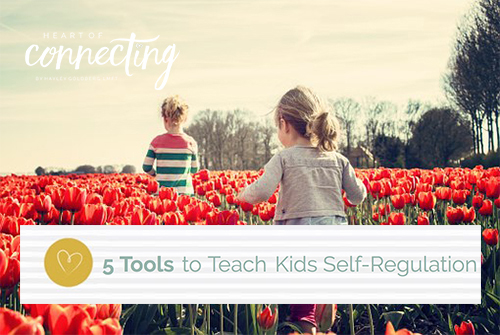
In Part 1 of Self-Regulation - What it is and Why it is Important? - we learned the best definition, according to McClelland and Tominey is where self-regulation is defined as the “conscious control of thoughts, behaviors, and emotions.” They describe self - regulation as the ability to stop, think and then act.”
Today, in Part 2, we’ll talk about giving your child the tools to learn the skills of self-regulation as they growing and developing. But before we jump in, let me share a few stories with you.
Little Jack is two years old. Mom and Jack are out running errands today. It’s past lunchtime and his little tummy is growling like crazy. Coming out of the grocery store, mom says, ok, Jack just one more stop, and we will stop to eat, and then we can go home.
And Jack melts down in the parking lot. He starts to throw a tantrum, screams, cries, and he’s fighting with his mom while she’s trying desperately to put him in the car seat. This is to be expected with a 2-year-old whose yet to learn “Self-regulation” at this age.
However, Olivia is now 4...and will turn 5 in a month and a half. She is in her last months of preschool and will start kindergarten soon. The teacher asks the class to finish cleaning up and come for a snack. Olivia has been looking at the kids on the playground, and all she wants to do is go outside and play.
The teacher calls her name to get her attention and reminds her that help is needed in cleaning up – and that’s when everything stops. Olivia has a meltdown right there in front of the whole class. The teacher is unsure of what to do and how to manage yet another meltdown from Olivia. She wants to help her and get this behavior under control, but the more she talks to Olivia, the louder she cries and screams, and the more upset she becomes.
Olivia is struggling with self-regulation. She’s really disappointed she can’t go outside, and she is unable to manage her emotions or control her behavior at this moment.
Talking to mom I learned Olivia had trouble, even as a baby, learning to self-soothe. She was a difficult baby who reacted to everything. Soothing her and settling her down was always hard for mom and dad.
As parents, we want to start teaching kids at a young age to learn the tools and skills that will serve them well through life. As new moms when you picked up your crying baby and cuddled her, kissed her and rocked her - you were beginning to teach your baby self-regulation skills.
Building self-regulation skills begin with children feeling safe and trusting their caregivers. It begins with babies knowing that mom and dad are consistently there for them and feeling all is ok with the world.
Moving forward and continuing to support the development of self-regulation in your toddler or preschoolers begins in the home with loving parents children trust to provide a calm, caring and stable environment.
By starting at this young age helping kids learn self-regulation, we set them up for continued success as they grow and develop.
With this strong family foundation in place, there are tips and tools you can use to help your child mature in this area. Here are five parenting tools to help teach kids self-regulation.
Be the Model
As the parents, being an example is powerful. When you model self-regulation skills, children see how calm is done– Children imitate the behaviors, thoughts, and attitudes they see in their parents. Kids learn more by what you do - or model - than from what you say.
Be Intentional
Take an active role in your child’s learning to help them manage their emotions and control their behavior. To become intentional in teaching regulation skills, it’s important to take time to observe, consider, and reflect on the behaviors your child is struggling with, so you know what self-regulation skills to teach. Notice your child’s behavior and label it with words.
Create Opportunities
Multiple and varied skills can be taught through play. Your child has a high play ethic, and the more fun you create as the teacher of skills, the more your child will learn from the lessons you are trying to teach. Find multiple opportunities throughout the day to teach skills through play.
Provide Support
Giving your child the support they need is critical. As parents, it's hard to see your child struggle in their behaviors and managing emotions when they are frustrated or upset. Your child needs your support, not your criticism. Sometimes lots of support, and extra patience are needed when kids are learning new things. As your child’s abilities develop, the level of support will change and you can step back as they keep practicing their new skills. Practice makes better (we never ask kids to strive to be perfect). :)
Give Feedback
Targeted, specific, and timely feedback gives your child motivation to keep practicing their skills and learn new ones. Praising your child when they use their new skills encourages them to keep using these new self-regulation skills rather than old hitting, whining, tantrum or meltdown behaviors. Providing feedback by correcting misbehavior also provides kids with valuable information in the learning process.
Children are called on to use their self-regulation skills all throughout the day. Dealing with disappointment and frustration (and much more) become almost impossible for them at times.
A child who struggles in this area may have difficulty building and maintaining friendships, cooperating with others, and accepting “NO”. But by being active in teaching your child self-regulation skills, you are giving them the gift of being a happier child, and eventually, growing into the peaceful and well-balanced adult they deserve to be.
As for little Jack? - Well, his parents have are being intentional and have already started teaching him tools he can understand even at the age of 2. He is a smart little guy and as mom and dad continue to teach, empower, and support him, he’s learning and will do great!
Olivia? - Yeah, mom and dad now recognize that Olivia is in need of help and support in this area of her development. We’ve had a conference with her teacher to best support her at school and I’m providing parent coaching for best practices to guide and teach her at home. She has the support she needs moving forward for the happy and successful future she deserves.
Changing patterns of behavior is hard, and it can be confusing and challenging to try new things. It’s also easy to give up when something new doesn’t work out and then to come up with plenty of excuses about why it doesn’t work.
I need you to know support is always available.
If you relate to any of this information and want to learn more about how I can help you, or if you want to schedule a free phone conversation to see if my coaching is right for your family, please email me at This email address is being protected from spambots. You need JavaScript enabled to view it.
Your parenting counts!
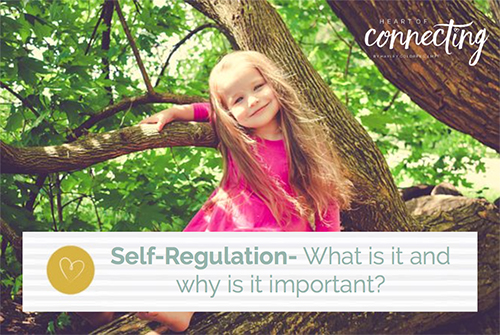
When children are misbehaving, being disrespectful, or using aggressive behavior to get their wants and needs met it’s so easy for parents to get frustrated with their little guys and focus solely on trying to stop the unwanted behavior.
While you definitely want better behavior from your kids stopping the misbehavior shouldn’t be your only focus – we need to look at skills and teaching kids what to do instead!
With the brain research we have today and the information we have on behavior and child development we have a much deeper understanding of childhood and the role self-regulation plays in development. We know we can’t separate out children’s behavior from self-regulation and their social-emotional development, they’re just too interconnected.
What becomes important then when dealing with misbehavior is to be looking at your child’s self-regulation skills and what skills your child is lagging in. This helps you know what behaviors you need to teach.
All this talk about self-regulation and you’re most likely wondering what exactly does that mean? We know it’s something we all want for our kids, but it seems so elusive, especially in the early years.
That’s because no single definitions exists when we talk about self-regulation. The best definition, according to McClelland and Tominey is where self-regulation is defined as the “conscious control of thoughts, behaviors and emotions.” They describe self -regulation as the ability to stop, think and then act.”
As children move along the developmental continuum kids differ in the rates they grow and learn self-regulation skills and more appropriate ways to get their wants and needs met.
Self-regulation in young children leads to stronger academic performance, helps kids form healthy friendships, and provides them with the social-emotional skills they need when facing stressful situations in life.
Without good self-regulation skills children may struggle socially and academically.
So what kinds of self-regulation skills do kids need to function well?
Self-regulation includes skills like the ability to delay gratification, control impulses, think about consequences, remember rules, look at options (problem solve), pay attention, and reason so they can appropriately get their wants and needs met.
The good news is that Self-regulation skills are all learned skills. With intentional teaching of skills and with practice your child’s self-regulation skills can be improved.
When it comes to self-regulation children learn to internally control or regulate themselves and their behavior by first receiving support from external controls where parents or other adults in a child’s life model for them, help them, guide them and teach them to regulate themselves. That means us parents will need to do some really honest self-reflection and examine how we self-regulate when we’re stressed or upset.
According to Dr. Kristie Pretti-Frontczak, a researcher devoted to early childhood education there are five steps to follow if we are to be effective with intentionally teaching self-regulation. We’ll look at those 5 steps in the next blog post.
Changing patterns of behavior is hard and it can be confusing and challenging to try new things. It’s also easy to give up when something new doesn’t work out and then to come up with plenty of excuses about why it doesn’t work.
I need you to know support is always available.
If you relate to any of this information and want to learn more about how I can help you, or if you want to schedule a free phone conversation to see if my coaching is right for your family, please email me at This email address is being protected from spambots. You need JavaScript enabled to view it.
Your parenting counts!
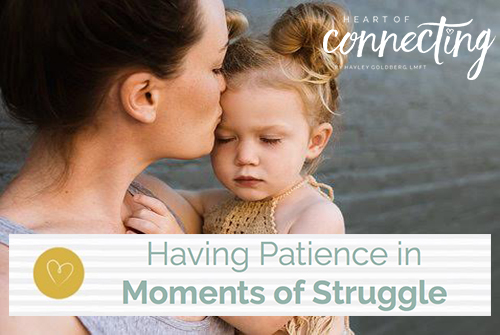
It’s so hard to be patient when your child is throwing a fit because you said no candy before dinner.
I know how hard it is to be patient when your child is taking forever to get ready for preschool or has lost their shoes and now you’re running late.
And it’s extremely hard to be patient at the end of the day when your kids refuse to eat their dinner or are acting silly at bath time or bedtime, refusing to cooperate with you.
Your patience wears thin and now you’re feeling stressed, overworked and exhausted. You’re yearning for just 30 minutes of downtime to sit in silence, spend time with your spouse, or relax watching your favorite TV show or catch up with social media posts.
It’s moment like these when we’re struggling to manage family life that raising kids feels like an endless chore. We snap! We loose our minds and being patient, calm and kind with our kids goes out the door and we’re screaming at our kids.
The reality is that it is incredibly hard to be patient in moments of frustration and struggle with your kids. It’s a struggle we’re tested with almost daily (or multiple times every day).
As parents we serve as models for our children in how to act in times of stress. Over time your children will adopt your behaviors and the way they were dealt with in times of stress as their own.
Your interactions with your child can either be patient, reflective and responsive driven by your goals and values, or reactive, driven by your feelings in the present moment. What will you model for your child?
Here are 5 things to help with having patience in moments of struggle
We will all get angry at our children sometimes. We’ll get frustrated and we’ll be impatient. That’s life! You have 18 years of consistent parenting with your child before they’re maybe out the house or off to college. Make sure you’re balancing your times of impatience with more moment of patience, connection and responsive parenting.
Changing patterns of behavior is hard and it can be confusing and challenging to try new things. It’s also easy to give up when something new doesn’t work out and then to come up with plenty of excuses about why it doesn’t work.
I need you to know support is always available. If you relate to any of this information and want to learn more about how I can help you, or if you want to schedule a free phone conversation to see if my coaching is right for your family, please email me at This email address is being protected from spambots. You need JavaScript enabled to view it.
Your parenting counts!
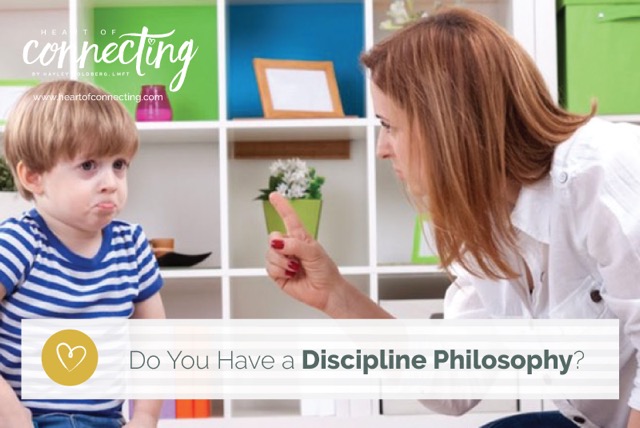
Disciplining children is one of the toughest challenges of parenthood. When you are trying to get your independent toddler to cooperate or trying to rationalize with your preschooler, parenting can quickly become frustrating and discouraging. Having an approach to discipline by creating an overall discipline philosophy can be helpful in guiding your parenting and choosing a style of discipline that is a good fit for your family.
There is no one size fits all when it comes to discipline. Each misbehavior has its own root cause. It is important to have a philosophy that takes into account the context of each situation, as well as your child’s developmental age and stage.
Discipline is not something we want to do on auto pilot or rely on broken tools from our past. Here are some questions to consider as you begin to develop a discipline philosophy that comes from a place of mindful intention.
Successful parenting begins in your heart. Take a moment to consider your parenting. Are you content with the direction you are headed? Are changes needed? Parenting and especially discipline are moving and changing elements that ebb and flow with the needs of our children. As children develop and mature you should be looking at your practices and making changes that feel right and are a good fit for you and your family.
Your parenting counts!
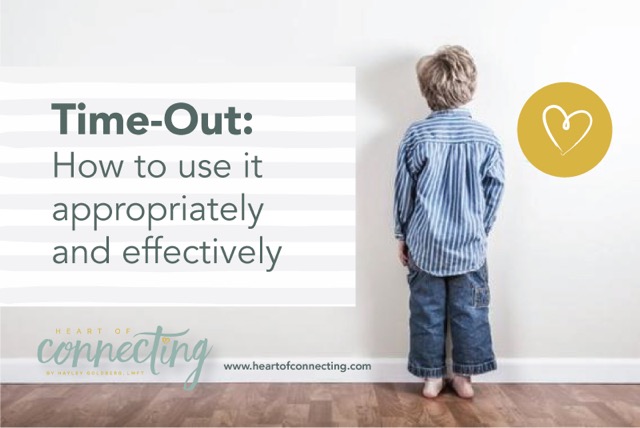
When young children misbehave it is common practice for parents to send them to a time-out space, set a timer, and when the time is up allow them to come back and join the group. Many times, as children are resisting being sent to time-out, this can escalate into something much bigger, leaving parents with either a battle much harder than the original behavior warranted, or walking away from the situation exhausted and defeated.
Time-out was originally developed as a positive alternative to spanking or corporal punishment. It was designed to be time-out from positive reinforcement. It was never intended to become another form of punishment. As researcher’s have studied the punitive implementation of time-out, and as we are learning more about child development, it is clear that time-out has negative effects on children, and little learning comes from putting kids in time-out. Daniel Siegel, a researcher on brain development, shared his findings that, when presented negatively, time-out is registered in the brain the same way that physical harm is registered.
As more research and understanding comes out about child development we know that sending kids away to time-out when they are misbehaving, when we disconnect from them at a time of conflict, goes against what they really need when they are acting out, which is connection. Children in time-out are not thinking about what they did wrong. They are not quietly contemplating how they can fix their behavior and do better next time. Time-out does not change the behavior that got kids sent there in the first place, and it does nothing to teach children the skills they need to change behavior so they can do better moving forward. Time-out is a broken tool that does not get at the core of behavioral communication.
Behavior is communication. It is not random. All behavior is purposeful and has meaning. When we know what our children’s behavior is communicating we can respond to the root of the communication and address what is needed. There are three things behavior may be communicating: unmet needs, unlearned skills, or undeveloped self-regulation.
Unmet needs can be physical needs like kids being tired or hungry or they can be emotional needs where children need more connection or attention from those they love. Unlearned skills is a common theme for toddlers and preschoolers. Social skills are learned behaviors and if children have not learned certain skills we will see it in their behavior. Undeveloped self-regulation is natural and normal in young children. This is a skill that takes time for children to learn and develop.
For time-out to be a positive and effective parenting tool we need to be responsive to children and consider time -out as a time for coaching and meeting kid’s needs. Traditional time-out, thinking that children will figure it out while sitting alone is failed parenting from the past.
Effective time-outs follow these four steps:
Reinforce. Repeat. Redirect. If children go back out and do great with their behavior reinforce the new positive behavior they are engaging in. When children go back out and repeat the negative behavior, pull the child back out, excuse them from the situation and repeat the teaching of the new skill or spend more time with self-regulation before sending them out to try one more time. If children are still struggling after we repeat the teaching process they may need to be redirected to another activity for now. If they cannot be redirected, parents may need to end the current activity or leave the event or playdate. Continued misbehavior may be communicating, “I do not have the skills and this is just too hard right now.”
Childhood is a time for learning and making mistakes comes with learning. Our role as parents is not about having control over our children but rather to help children develop the skills they need to be happy and successful in life. Building these skills takes time, support, patience, and guidance. As children are growing and building skills remember that relationships matter. Parenting is more than getting children to behave better. Better behavior is contingent on the relationship we have with our children. Your parenting counts!
My work is dedicated to supporting parents and early childhood educators in understanding and reducing challenging behavior in young children at home and in the preschool classroom.